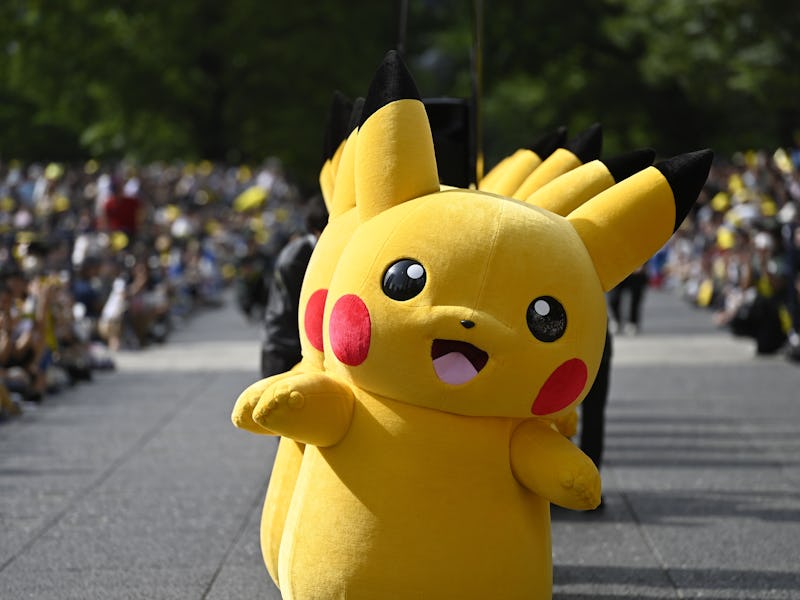It’s Been 25 Years Since ‘90s Kids Got Their Second Favorite Pokémon Game
This unexpected sequel kept Pokémon Fever running hot.

We never spare a thought for the second impression. There’s loads of wisdom and research about how important a first impression is, the lasting impact it can have on relationships, the confidence it can provide. The second impression? Meaningless. It’s a tragic figure, really, because what if the second impression is really cool? Is it possible for a second impression to stick with us? For Pokémon fans, the answer is yes.
On April 14, 1999, Pokémon Pinball released in Japan (it came to North America in June). For Japanese fans it was just a piece of a much larger ecosystem of toys, video games, trading cards, and TV shows. But for fans in the West, Pokémon content was much harder to come by. The first Pokémon game in the U.S., Pokémon Red and Blue, released on Sept. 28, 1998. The first season of the anime started a syndicated run a few weeks prior to the game’s release and ended in mid-November. Pokémon fever really took hold over Christmas that year, and fans were eager to embrace whatever game came next. Most weren’t expecting pinball.
It’s easy to see why so many ‘90s kids get in their nostalgia feels for this game. Imagine it's Christmas 1998. Santa’s been good to you this year. You finally got a copy of Pokémon Blue (your brother got Pokémon Red, but it’s fine) and, even better, you got the new GameBoy Color. You spend the next few months running through Pokémon Blue, catching the re-run of the TV series on Kids’s WB in the spring, of course, and then as soon as Summer vacation hits. Boom: Pokémon Pinball arrives on GameBoy Color.
From a technical standpoint, Pokémon Pinball seems fairly straightforward. Pokéballs replace pinballs and the primary objective is simply to run up the score. The game runs on software designed by Nintendo legend Satoru Iwata for 1987’s Pinball on NES. It’s as good a pinball game as you’ll find outside of a real-world arcade (shout out to Space Cadet 3D Pinball on Windows, too) and even incorporated some next-gen tech with a AAA-powered rumble feature built into the cartridge — additional battery required.
Nostalgia aside, what makes Pokémon Pinball special is that its much more than pinball-with-a-skin. It has a full Pokédex for players to pursue, including a catchable Mew! Like the main series, there’s a lot of grinding involved for diehards. To start, there are two different tables to choose from: red and blue. Each table provides access to different areas fans will recognize from the series like Pallet Town, Rock Mountain, Saffron City and more. There are 17 areas in all, offering loads of replayability.
It’s a happy accident that, by design, pinball is a wonderful game loop that marries perfectly with the “Catch ‘em All” attitude. The red and blue tables are divided into top and bottom screens, adding some variety and skill to the target-driven mechanics. There are different combos in each area that cause specific Pokémon to spawn, so it doesn’t feel as random as traditional games. There’s no conventional battles, but a handful of boss stages mix things up a bit more as you’re tasked with clearing all the Digletts in a cave or all the Gastly in a graveyard.
Boss levels weren’t super creative but still managed to add another dimension to the gameplay.
What is nostalgia without aesthetics? Beyond the excellent gameplay, Pokémon Pinball shows its not just some cash grab. The animations are great, and watching Pokémon come to life in the Pokédex makes captures even more satisfying. The soundtrack is amazing, too — a major plus when you’ve got to sink those hours into trying to spawn a Lapras.
It’s impressive how, 25 years later, the care and consideration given to this title still pay off. Unfortunately for fans, you can’t experience the original Pokémon Pinball unless you own the physical cartridge and a working GameBoy, it’s currently unavailable on any digital platform. Meanwhile, fan momentum has coalesced behind a re-release of the sequel, Pokémon Pinball: Ruby and Sapphire, which frankly has better odds of a port given it’s appearance on the Wii U. But if nothing else, Pokémon Pinball reminds us once again that it was great to be a ‘90s kid (sorry, Gen Z).